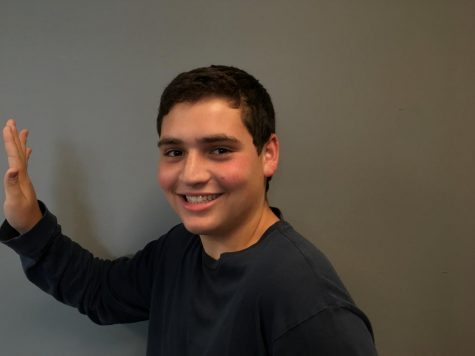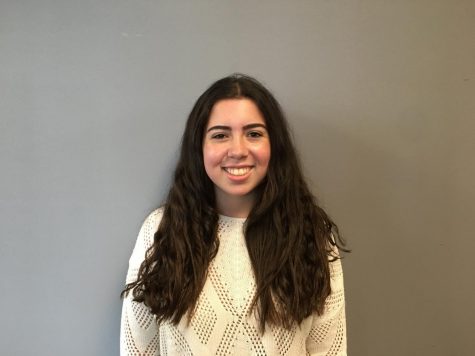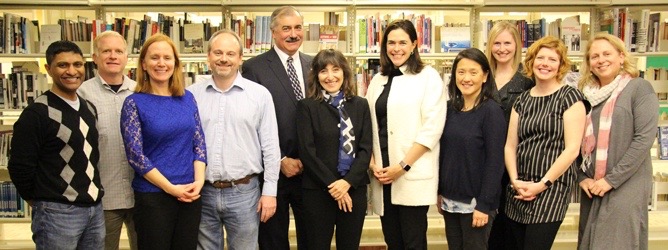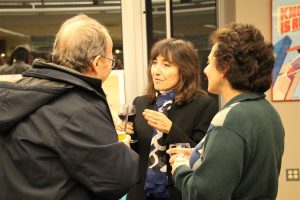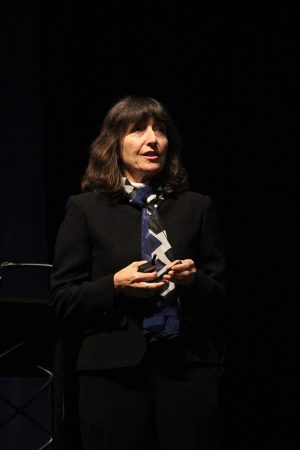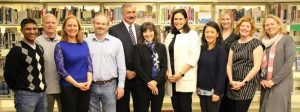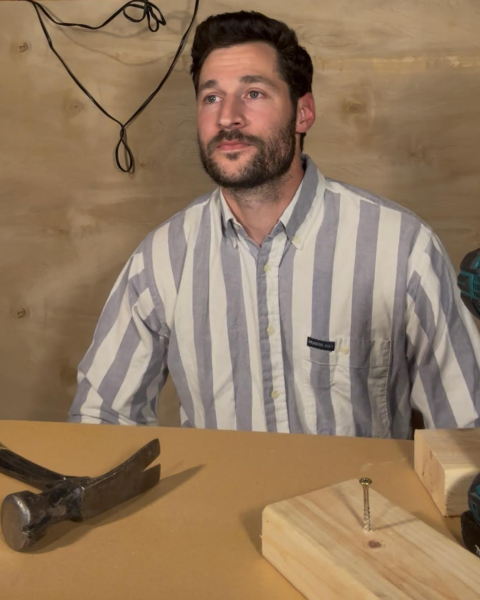10 Years of Science
Astronomer and Astrophysicist Dr. Freedman Visits Parker
A chemical engineer, a paleontologist, a primatologist, and a cosmologist–only a few of the types of scientists who have participated in Parker’s annual Visiting Scientist, Inventor, and Engineer In Residence program in the past ten years. Including this year’s Visiting Scientist, Dr. Wendy Freedman, Professor of Astronomy and Astrophysics at the University of Chicago, four were present at the anniversary celebration reception at the Kovler Family Library on February 6.
Ten years ago, Principal Dan Frank approached Eighth Grade Science Teacher Anne Marie Fries with the idea. “Frank called me one day and said, ‘We have this endowment money that’s been given to the school to start up a visiting scientist program–what do you think about that?’” Fries said, “and we just jumped onto it right away.”
In 2007, Dr. Leon M. Lederman delivered the first Visiting Scientist lecture, entitled “Symmetry and the Beautiful Universe,” covering his research as an experimental physicist. Since then, men and women in various fields have delivered lectures on topics ranging from energy to biodiversity to the science of choking. Lederman’s successor, paleontologist Dr. Paul Sereno, was the first to invite students and teachers to tour his lab, leading other Visitings Scientists–including Dr. Ka Ya Lee, Dr. Matt Tirrell, and Dr. Liz Gerber–to do the same.
According to Fries, the program has over the years become better adapted to prioritize student involvement. “We are more thoughtful about where we connect the scientist with the students in a way that has a relevant connection,” Fries said. “We’ve gotten smarter about how to schedule these scientists so they have the greatest impact on the students that they connect with.”
Recent Visiting Scientists have come to Parker for two days over the course of the year, partnering with classes, presenting at a Morning Ex, and giving an evening lecture. Freedman held a question and answer session with physics classes and the Women in Math and Science club during her first visit on December 5.
“I’ve been really impressed by the level of passion and enthusiasm and fearlessness of the students here,” Freedman said. “Asking questions and really trying to understand what it is that I do, and how I do it. When you talk to an audience that’s excited, it inspires you to give more, and to share more. I can’t even imagine what it would have been like to have scientists come to the school that I was at…it’s a marvelous opportunity.”
Freedman gave her lecture came on the evening of her second visit to Parker. Before she spoke in the auditorium open to the whole Parker community, though, guests attended a reception held in the Kolver Family Library.
Hosted by the development office, the reception included a professionally made video of the history of the program, which highlighted past visiting scientists and featured interviews from Sereno, psychologist Dr. Sian Beilock, and Parker senior Lauren Goodman. Following the video, attendees swapped stories about college, shared audiobook recommendations, and discussed current events in science over wine and hors d’oeuvres.
In her lecture, entitled “Measuring the Size and Age of the Universe and the Giant Magellan Telescope” Freedman explored questions about the scale and makeup of the universe. Images of dark gradient skies were projected behind Freedman as she discussed Cepheid variables, cracked jokes about Pluto’s status as a dwarf planet, and answered questions about everything from black holes to the importance of a dry sky when observing faraway galaxies.
“My favorite part of the lecture was how much she emphasized the future,” freshman and President of Astrophysics Club Matthew Turk said. “It was really exciting when she talked about her telescope and the future of space exploration because that used to be science fiction. But now it’s sort of becoming a reality, and it’s hard not to be excited about that.”
Freedman opened her lecture with a moment from her childhood that brought her attention to gender inequality within and beyond the fields of science, technology, engineering, and math. Her former teacher would discourage girls from listening when he explained the technical details of science.
According to Freedman, the increasing opportunities for women in science are what excite her about the future of physics. “The numbers of women at every stage from undergraduates to graduate students to postdoctoral fellows to assistant professors to even, as I became, a director of a major observatory and chair of the board of a big telescope project–those kinds of opportunities didn’t exist,” Freedman said. “And now I see lots of young women coming into the field, being in major programs, and for me that’s tremendously encouraging to see that the situation has changed and now there are new opportunities for young girls that weren’t there before.”
As for the next ten years of the program, Seventh Grade Science and Department Chair Teacher Kara Schupp wants to develop and expand the program. “We hope that we can continue to build relationships so that the connection with the scientist doesn’t just end after their two visits and night lecture,” Schupp said. “To give students the opportunity to see science in action, see a lab, see scientists work, and to connect to it would broaden their horizon.”
Upper School Science Teacher and Department Co-Chair Elizabeth Druger agrees. “At Parker we’re really strong at building relationships, so I think not only were we able to build relationships with these scientists but sustain them as well,” Druger said. “We see this program as a bridge between what happens in the classroom and the world out there.”
